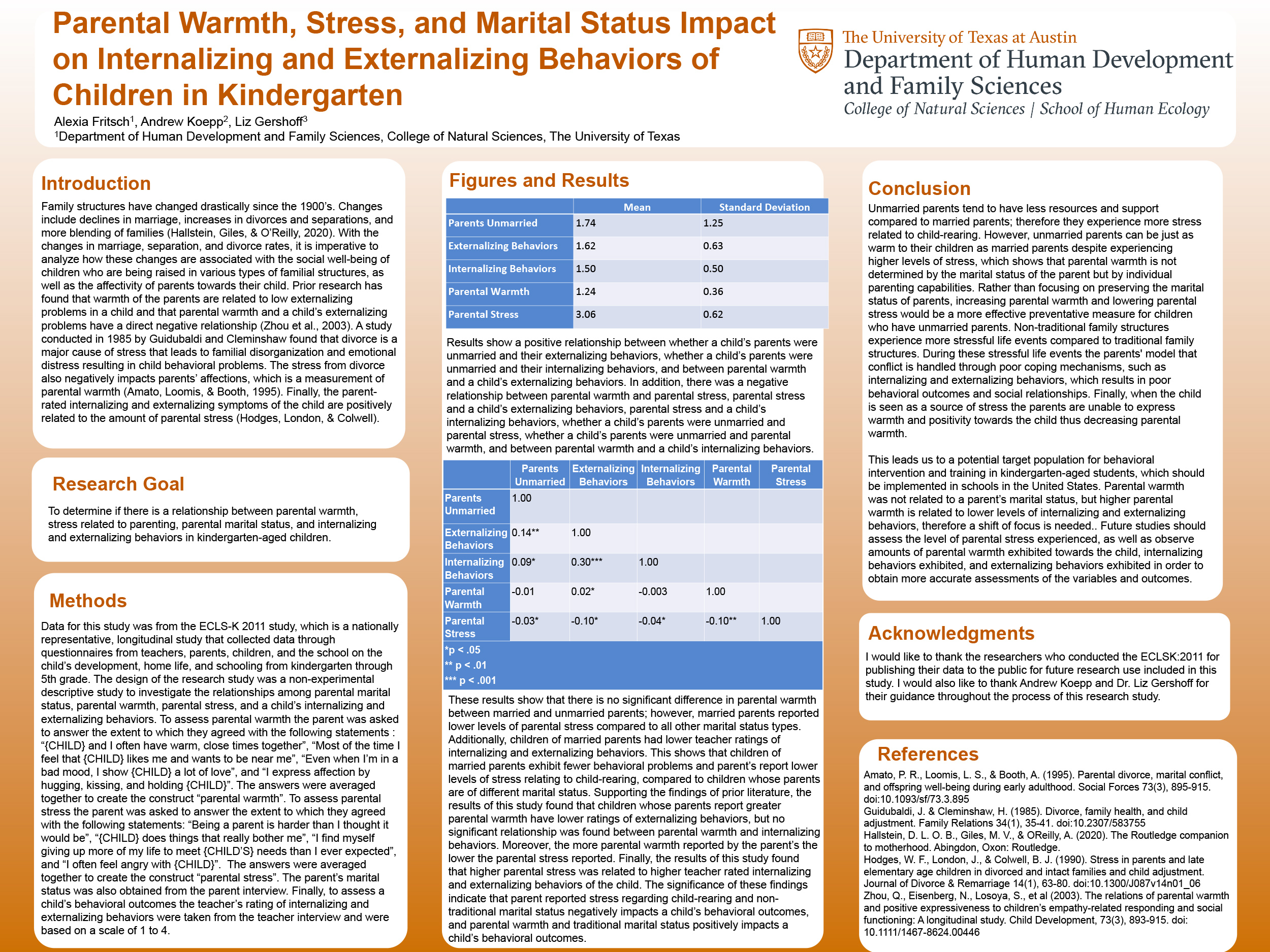Alexia Fritsch
Prior research has found that parental warmth is associated with a child’s amount of behavioral problems (Waller et al., 2014) and that levels of parental stress are associated with teacher and parent ratings of externalizing and internalizing behaviors in children (Hodges, London, & Colwell, 2008). However, little research has been conducted looking at family structure’s influence on parental warmth and stress and subsequent behavioral outcomes of a child in kindergarten. I hypothesize that married parents will exhibit greater parental warmth and experience lower levels of stress relating to parenting and that their children will exhibit lower internalizing and externalizing behaviors compared to divorced, widowed, separated and single parents. To determine if family structure influences parental warmth and parental stress, and if parental warmth and stress impact children’s behavioral outcomes I examined data from the kindergarten wave of the ECLSK:2011 study, a nationally representative sample of children. Correlations among variables showed that married parents showed lower parental stress when compared to divorced, widowed, separated, or single parents. Parents’ marital status had no relationship with parental warmth. In addition, children whose parents showed greater parental warmth and lower parental stress exhibited fewer externalizing and internalizing behaviors. These findings suggest children in divorced, widowed, separated, and single parent families have parents who experience more parenting stress, which may increase the likelihood of poor behavioral outcomes. This indicates a potentially large target population for behavioral intervention in kindergarten-aged children.

Comments
Thank you for sharing this interesting research. Given the high amount of stress families are experiencing right now, do you see implications for your work in helping parents understand how to help children at this time? – Jeanette Herman
I really like how clearly you’ve spelled out your research questions and your table of p-values. Good job! – Rob Reichle

